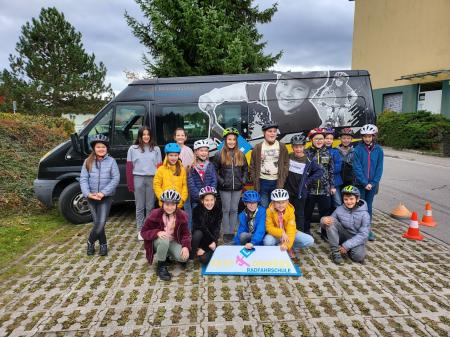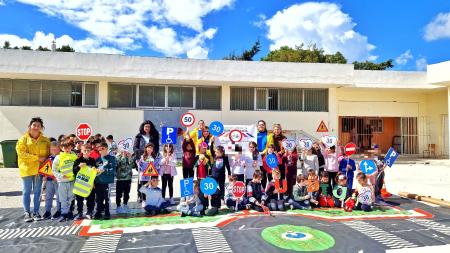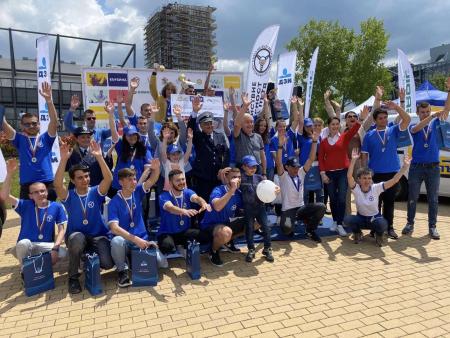Our members are dedicated to improving road safety and sharing their knowledge with the wider community. Here, you can explore our members' good practices – initiatives that have been assessed for their effectiveness in addressing a road safety problem and have proven results.
Get inspired – and sign up to share your good practices too!

Wednesday, May 24, 2023
In Österreich fahren die Kinder immer schlechter mit dem Fahrrad und generell hat sich die sportliche Belastungsfähigkeit seit Covid stark verschlechtert. Viele Kinder haben kein eigenes Fahrrad und können auch nicht Fahrrad fahren. Dadurch gelingt es ihnen nicht die freiwillige Radfahrprüfung zu schaffen und ein kompetenter Verkehrsteilnehmer zu werden. Durch die kostenlosen Schulungen der Easy Drivers Radfahrschule (finanziert durch klimaaktiv mobil) wird diesem Trend entgegengesteuert und die Kinder zu sicheren Verkehrsteilnehmern ausgebildet. So steigt ihr Selbstvertrauen, ihre individuelle Mobilität, die Verkehrssicherheit und es wird ein Beitrag zum Umweltschutz und zur Mobilitätswende geleistet.

Tuesday, May 23, 2023
The book "My Hero" graces the libraries of the 110 schools of Rhodes following a decision by the Board of Directors of the Primary & Secondary School Committee of the Municipality of Rhodes. The goal is to adorn the libraries of all schools in the South Aegean Region.
____________________________________
I feel proud because I managed to write a book starting with my Hero who returns to Rhodes who meets his friends, operators, the Prime Minister of his country to talk about the human lives that are lost in the streets and with the aim of being read and for its readers to know the causes of traffic accidents, for my country, for the Strategic Road Safety Improvement Plan in Greece, for Europe, for World Victims' Remembrance Day, for supporting victims and everything about traffic accidents and how they can be reduced.
____________________________________
I feel proud because I managed to write a book starting with my Hero who returns to Rhodes who meets his friends, operators, the Prime Minister of his country to talk about the human lives that are lost in the streets and with the aim of being read and for its readers to know the causes of traffic accidents, for my country, for the Strategic Road Safety Improvement Plan in Greece, for Europe, for World Victims' Remembrance Day, for supporting victims and everything about traffic accidents and how they can be reduced.

Tuesday, May 23, 2023
The drivers of An Post deliver to over 2 million addresses on a daily basis. Unfortunately, some drivers do not respect the speed limits or do not wear a seatbelt. The campaign also want to create more awareness around vehicle rollaway prevention and safe movement of vehicles.

Tuesday, May 23, 2023
Съюзът на българските автомобилисти /СБА/ стартира шестото поредно издание на състезанието „Най-добър млад шофьор на България“. Инициативата се превърна в ключова кауза за опазване живота на пътя, а кампанията вече няколко години успява ефективно да работи по темата „Пътна безопасност“ с най-рисковата категория шофьори – тези между 18 и 26 години.

Tuesday, May 23, 2023
El objetivo principal de esta aplicación es el de prevenir accidentes de tráfico ocasionados por imprudencias o despistes en vías urbanas, relacionados con camiones de la basura, o interurbanas, relacionados con ciclistas, mediante la utilización de una aplicación móvil innovadora que sólo deben descargarse los conductores de camiones y los ciclistas.
Es muy sencillo e intuitivo de utilizar, los ciclistas y los conductores de camiones deben llevar un teléfono móvil con la aplicación descargada y activarla en el momento que empiezan su recorrido. La aplicación manda los datos de ubicación a Waze (la aplicación de geolocalización más usadas a nivel mundial, propiedad de Google) y ésta mostrará y alertará a los conductores de la presencia de ciclistas o camiones de la basura en las vías urbanas e interurbanas respectivamente. Por tanto, la aplicación cubre dos ámbitos de riesgo: por un lado, prevé la posición de camiones de la basura para los conductores de vías urbanas; y por otro, alerta sobre la posición de ciclistas (vehículos frágiles) en las vías interurbanas. Esta segunda aplicación la consideramos prioritaria por la gravedad y número de los accidentes ocasionados entre vehículos y bicicletas.
Es muy sencillo e intuitivo de utilizar, los ciclistas y los conductores de camiones deben llevar un teléfono móvil con la aplicación descargada y activarla en el momento que empiezan su recorrido. La aplicación manda los datos de ubicación a Waze (la aplicación de geolocalización más usadas a nivel mundial, propiedad de Google) y ésta mostrará y alertará a los conductores de la presencia de ciclistas o camiones de la basura en las vías urbanas e interurbanas respectivamente. Por tanto, la aplicación cubre dos ámbitos de riesgo: por un lado, prevé la posición de camiones de la basura para los conductores de vías urbanas; y por otro, alerta sobre la posición de ciclistas (vehículos frágiles) en las vías interurbanas. Esta segunda aplicación la consideramos prioritaria por la gravedad y número de los accidentes ocasionados entre vehículos y bicicletas.